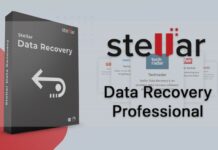
Traditional enterprise data storage, which stores data in isolated silos, has its own set of restrictions. Accessing and combining data from various endpoints impedes holistic data analytics; nevertheless, having a single platform with a single access point from which data is collected can help organizations deal with a wide range of data.
Personetics.com, for example, helps financial institutions to develop greater relationships with their small company customers by leveraging the power of big data, AI, and predictive analytics to assist businesses to govern their finances and simplify money management.
Big Data is Changing the Way Businesses Operate
Traditional transactional data solutions were based on structured data that was typically managed in the background. These methods addressed database requirements including security and data accessibility, as well as data quality checks like field mapping and duplication eradication. Enterprises are increasingly relying on unstructured data, resulting in ever-expanding data lakes. With the increase in scale, significant challenges with efficient data management occurred.
Nothing has changed in terms of the fundamental requirements that data must meet. Data correctness and usability are two examples of requirements. Because of the overall volume of big data, the minimal level of these basic criteria has risen to the point that organizations’ ability to properly handle such massive data warehouses has declined. Because big data typically includes multiple types of data, businesses may attempt to design tools based solely on the specific silo data. Another technique is to group various silos based on a preliminary strategy driven by application requirements. Database virtualization is another approach that exists.

Adaptability is Vital
Big data solutions are typically hosted by vendors who can manage big data fabric analytics and constantly rising data volumes. These providers may typically provide enterprise access to numerous sorts of data that have been integrated into a single unified system.
These suppliers can also deliver a single data platform to the organization by combining virtualized data and inter-application communications. Data virtualization enables organizations to integrate data that is either difficult to transport or requires some processing before transfer. Second, virtualization of data systems can increase performance for real-time data processing.
Big data fabric is often adaptable enough to meet a variety of implementation requirements via a combination of application programming interfaces. To begin with, it must manage data governance and handle a wide range of data as a baseline necessity. Big data fabric must also be capable of digesting data through automated procedures. It must also be fully auditable. All these elements interact to ensure that the big data fabric fosters efficient data curation and integration.
Big data triggered a chain reaction in all data-driven industries. Traditional SQL-based data warehouse environments can only offer so much to organizations in terms of mixed data type data integration. Big data has brought with it a plethora of data kinds, the majority of which are unstructured. The sheer velocity with which big data has expanded has led to an increase in the necessity for fast and reliable access to numerous data kinds. These access requirements are quickly becoming critical enterprise requirements.
Enterprises will always want a consistent version of the truth, which a centralized data access system can provide. Big data is frequently curated from multiple sources, and a centralized access mechanism will address any security and data discovery concerns.
For organizations to successfully use big data, they must be able to access diverse data collections in real-time in a format useable by analytics and reporting applications.
The fabric of AI and machine learning

With AI and machine learning becoming more ubiquitous in business operations, massive enterprise data storage is required. These activities necessitate complicated data structures, which are perfect given that huge data typically has a single access point.
Having a single point of access to data decreases the complexity of the data from the user’s perspective. This allows data analysts to concentrate solely on information rather than attempting to traverse complex data with erratic access.
In Conclusion
Don’t be intimidated by the prospect of using data analytics in your company. You are already creating a large amount of data within your present systems, and analytics technologies are becoming more accessible and simpler to integrate.

















